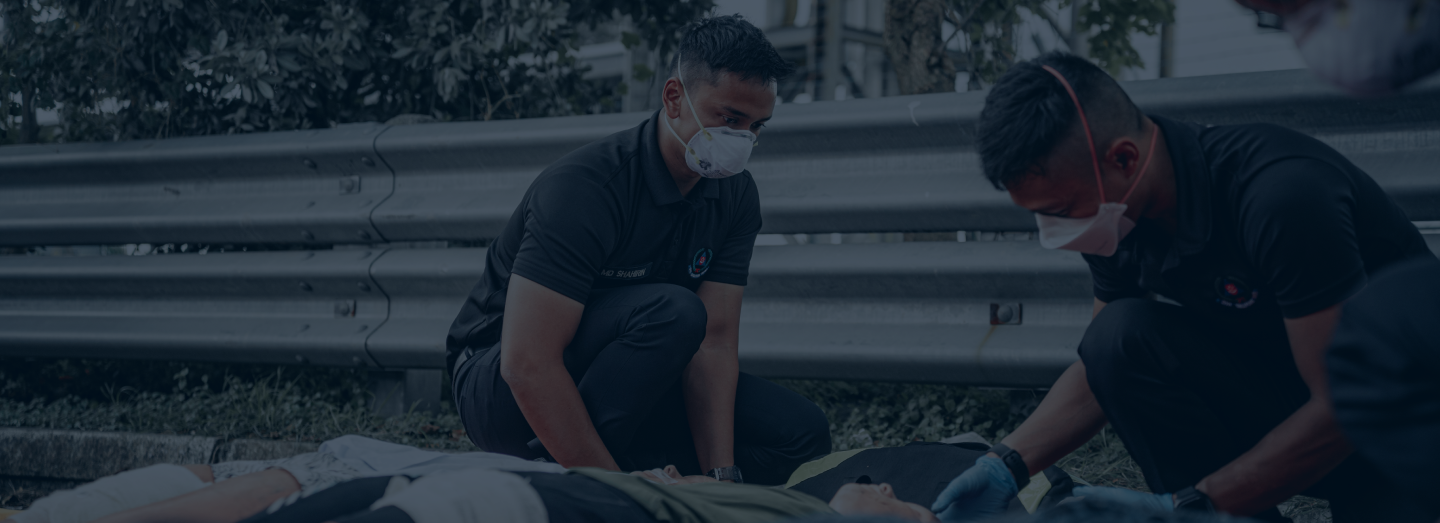On 22 March 2023, more than 300 personnel from various agencies, including the SCDF, Singapore Police Force (SPF), Singapore Armed Forces (SAF), JTC Corporation, ExxonMobil, Keppel Infrastructure, Jurong Port Universal Terminal (JPUT), Maritime and Port Authority of Singapore (MPA), Ministry of Health (MOH), and Home Team Science and Technology Agency (HTX), took part in Exercise Northstar XI at Jurong Island.
-introducing-water-mist-to-disperse-chemical-vapours-during-exercise-northstar-xi.jpg?sfvrsn=cedbbf08_1)
SCDF’s Ventilation Vehicle (left) introducing water mist to disperse chemical vapours during Exercise Northstar XI. The Unmanned Firefighting Machine (right) provides SCDF with sustained fire suppression capabilities and frees up frontliners to focus on other critical aspects of the operation. PHOTO: SCDF
.jpg?sfvrsn=3d93607c_1)
SCDF firefighters operating the Modular Oil Tank Fire-Fighting System (MOTFS), which enhances SCDF’s oil tank firefighting capabilities through an interchangeable modular design, comprising water pumps and large monitors. PHOTO: SCDF
First launched in 1997, Exercise Northstar is a series of exercises aimed to validate the Whole-of-Government response framework and improve emergency response and coordination among national agencies in Singapore. A cohesive response by the various agencies is crucial to Singapore’s national security and will help the country to recover quickly after a crisis.
Exercise Northstar XI, started off with a group of self-radicalised “terrorists” carrying out a simulated “attack”, by planting Improvised Explosive Devices (IEDs) on oil tanks and a chemical pipeline rack on the island. As the “terrorists” were neutralised by SAF’s Island Defence Task Force (IDTF) and SPF’s Emergency Response Team (ERT), they remotely detonated the IEDs, causing two oil tank fires and a chlorine leak on the island.
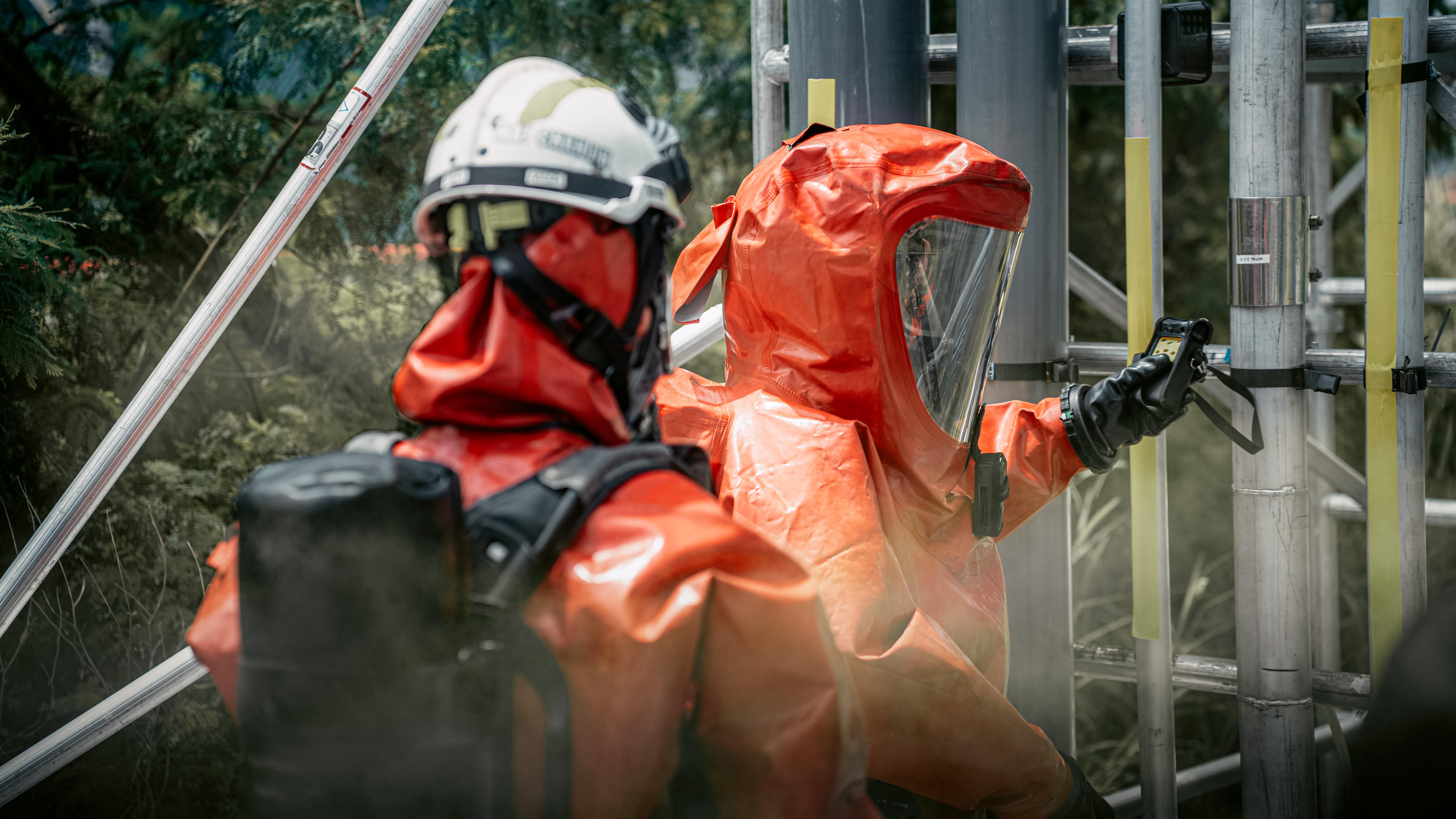
HazMat specialists from SCDF responding to the chlorine pipeline leak during Exercise Northstar XI. PHOTO: SCDF
In this exclusive Rescue995 feature story, Captain (CPT) Hans Poh, Operations Planning Officer at SCDF Marine Division, and WO1 Norashikin Binte Imran, Emergency Medical Services (EMS) 2IC at Bukit Batok Fire Station, shared their experiences and insights on their involvement in this exercise.
Rescue995: How would you describe your experience of participating in Exercise Northstar XI?
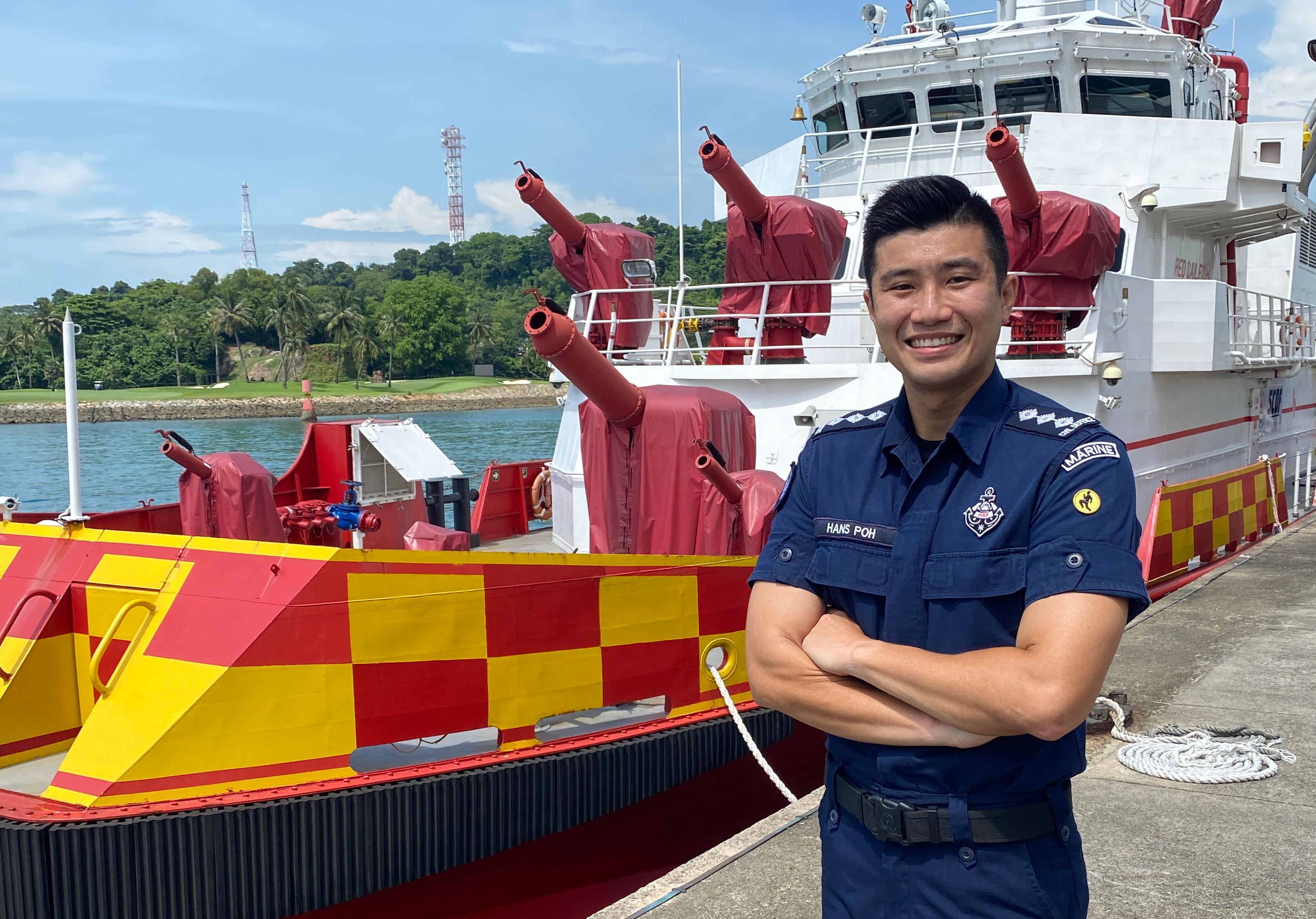
CPT Hans Poh, Operations Planning Officer at SCDF Marine Division. PHOTO: SCDF / Thomas Lim
CPT Hans Poh: As a member of the SCDF Marine Division, I feel both honoured and proud that our unit could play a part in the sea evacuation segment of Exercise Northstar XI. As part of the exercise scenario, the overland evacuation route was deemed too dangerous to use, due to the possibility of a secondary attack along the Jurong Island Highway. Our team was activated to evacuate about 60 casualties and evacuees by sea, from Jurong Island to the mainland. For the sea evacuation segment, our crew piloted the Heavy Rescue Vessel (HRV), also known as the Red Manta, to ferry the evacuees. It was truly an unforgettable experience.
-also-known-as-the-red-manta.jpg?sfvrsn=f5b7ad63_1)
SCDF’s Heavy Rescue Vessel (HRV), also known as the Red Manta. PHOTO: SCDF
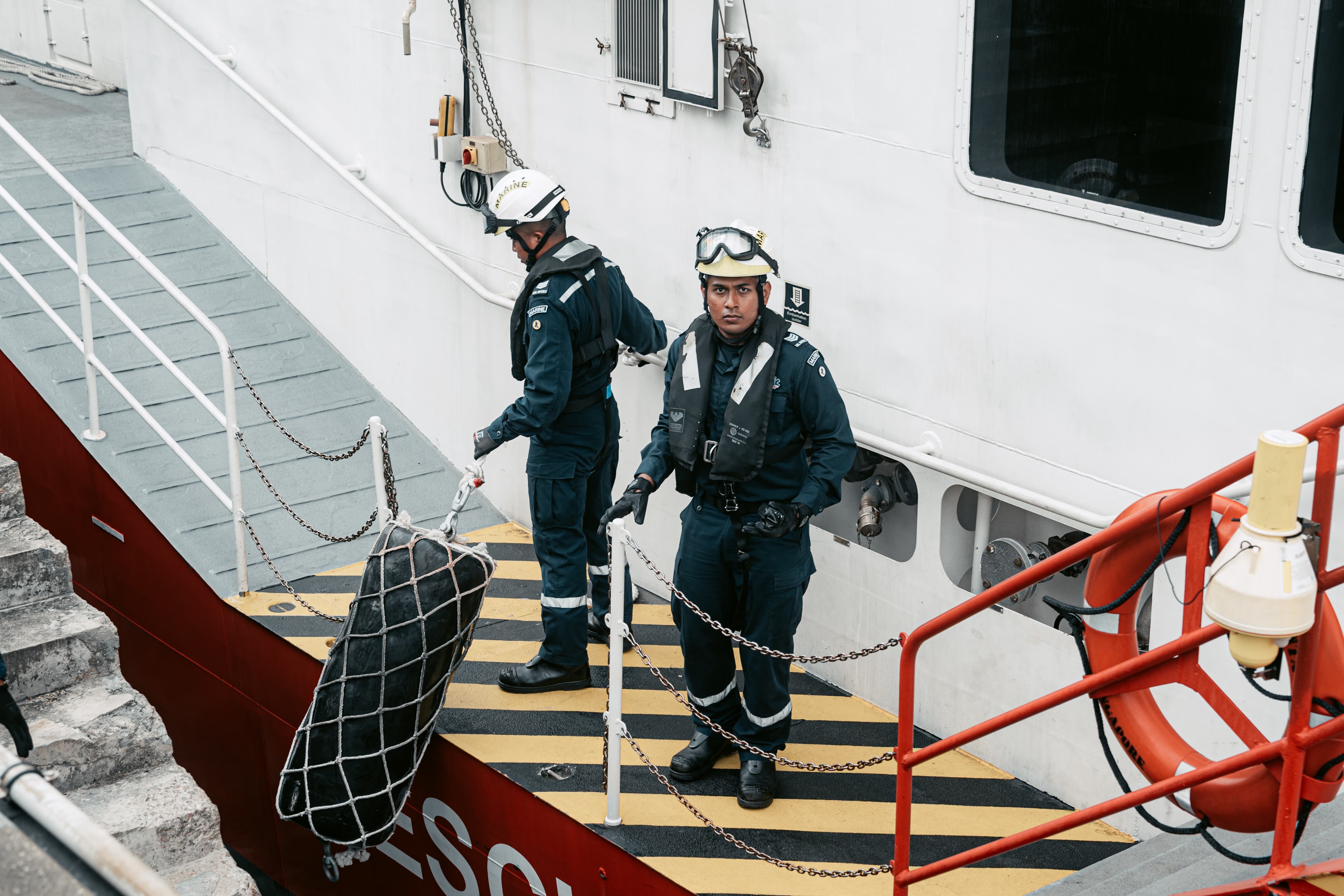
SCDF officers on board the Red Manta readying themselves to ferry the evacuees. PHOTO: SCDF
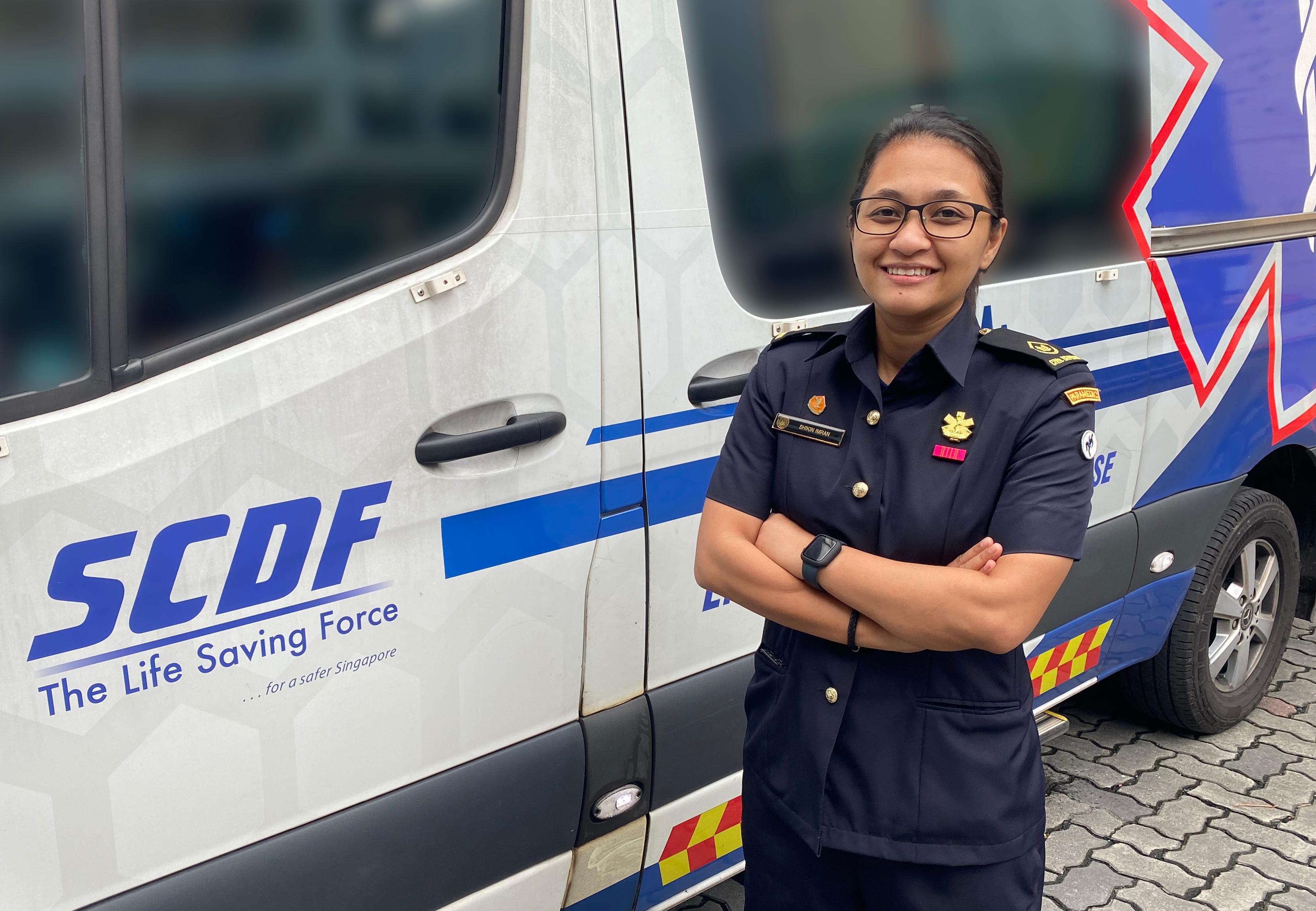
WO1 Norashikin Binte Imran, EMS 2IC at Bukit Batok Fire Station. PHOTO: SCDF / Thomas Lim
WO1 Norashikin: During the exercise, I had the opportunity to work closely with the crew from the Medical Support Vehicle (MSV), as well as the staff from the Ministry of Health’s (MOH) field medical team. Together, we set up and manned the First Aid Point (FAP) and Disaster Site Medical Command (DSMC). I was also fortunate to work alongside a group of talented EMS leaders during the exercise. Together, we were entrusted with the responsibility of directing all EMS movements and communications between the paramedics, emergency medical technicians and the exercise coordinators.
Throughout the exercise, we also had to manage personnel who were working alongside us. In this capacity, I felt akin to a "mother hen", ensuring that everyone remained hydrated, as it was a hot day, and focused on their respective tasks.
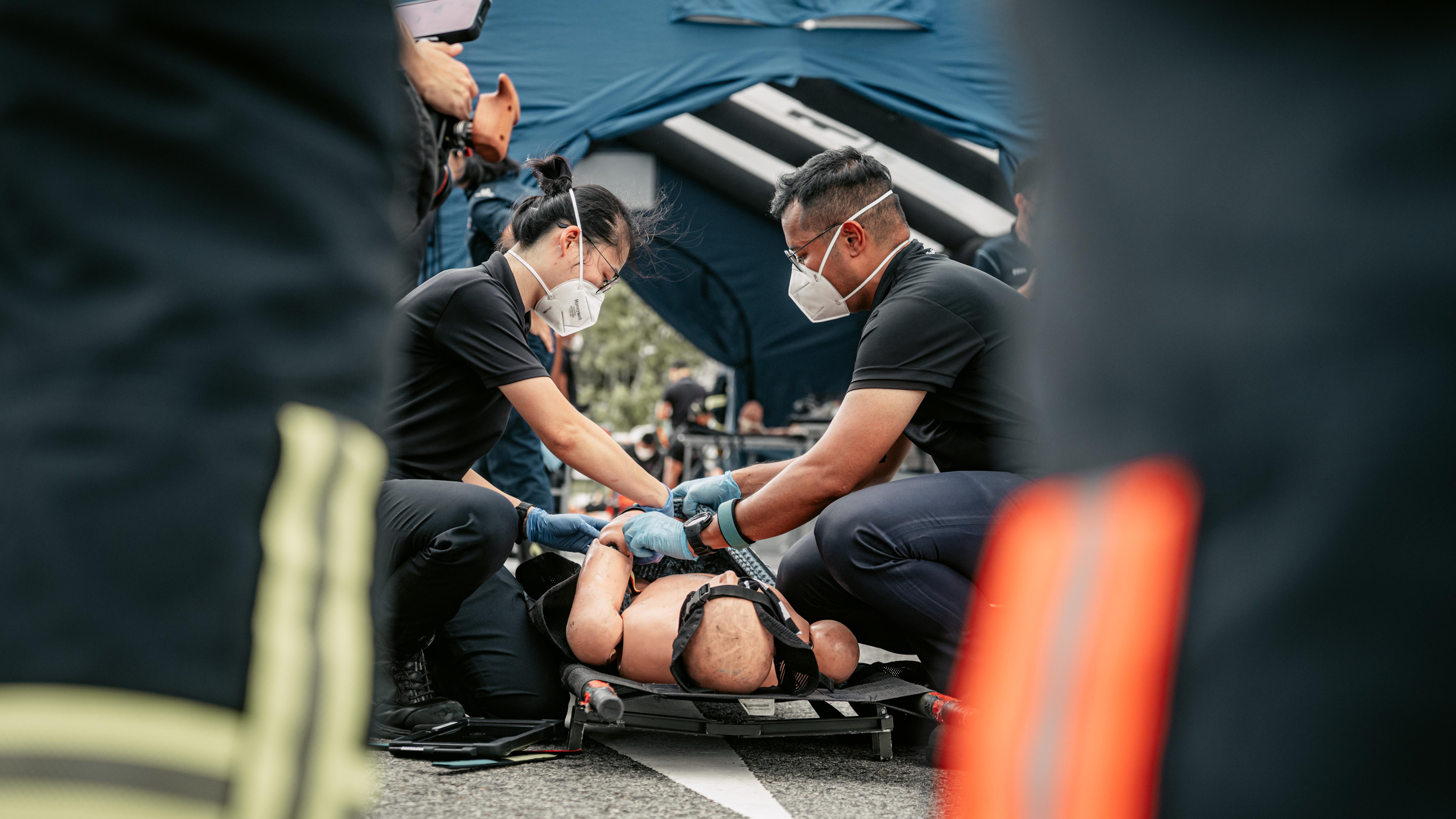
SCDF EMS officers assessing casualties prior to conveyance. PHOTO: SCDF
Rescue995: What were the greatest challenges for you and your team during the sea evacuation segment?
CPT Hans Poh: One of our primary challenges was to ensure the safety of the evacuees, as they boarded our vessel from the shore. As an Ops Planning Officer, I had to provide guidance and support to my team throughout the exercise. Furthermore, the sea evacuation segment required close collaboration with vessels from other agencies, such as MPA's Guardian and RSN's Fast Craft Utility (FCU). Therefore, we had to work closely and coordinate well with our maritime counterparts during the exercise preparations.
In my capacity as a coordinating officer, I communicated regularly with various SCDF departments and other agencies, including MPA and the Republic of Singapore Navy (RSN), to ensure that all the vessels were correctly and safely positioned for the exercise. Although it took time and effort to discuss and iron out the exercise details, I found it to be a meaningful learning experience.
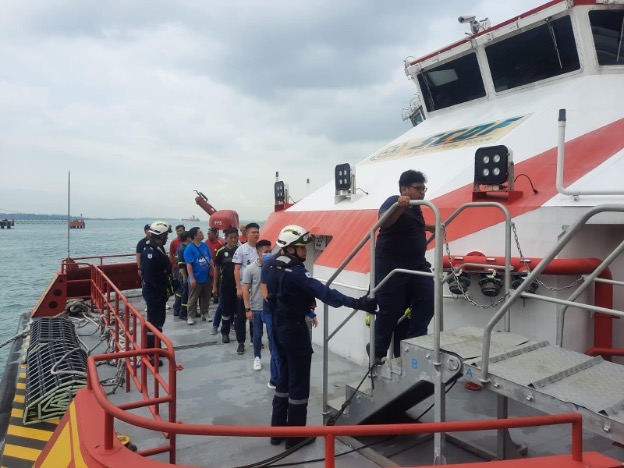
Evacuees disembarking the Red Manta during the sea evacuation segment of the exercise. PHOTO: SCDF
Rescue995: Share with us some of the ways in which you and your EMS team contributed to the success of this exercise. What were some of the challenges you encountered?
WO1 Norashikin: One of our greatest challenges was definitely the weather, which fluctuated from warm and humid conditions to sporadic bouts of rain. As exercise participants, we had to adapt to these varying weather conditions and stay mission-focused to fulfil the objectives of the exercise. I also advised my team to pace themselves carefully throughout the exercise.
As a leader, I took it upon myself to ensure the well-being of the personnel under my charge. Even though there were a few challenging moments during the preparatory phases of Exercise Northstar XI, including the actual exercise, as the EMS 2IC, I had to remain calm, collect and focused on the mission ahead. This help to put my team at ease and allowed them to remain focused on the mission ahead. I realised that when it comes to leadership, our actions speak louder than words and it has a great influence on the morale of the entire team.
From this experience, I understood that a leader must not only be strong but must also be adaptable to overcome challenges. I am grateful for the opportunity to learn from this exercise and to gain valuable insights into the importance of leadership skills during a major exercise.
Rescue995: Was there any new technology used in this exercise that left a lasting impression on you?
WO1 Norashikin: During the exercise, I witnessed first-hand, the positive impact of the Operational Medical Networks Informatics Integrator (OMNII). Introduced in 2021 as part of the Home Team’s initiative in Transformation and Digitalisation, OMNII has made its mark not only in this exercise, but also throughout the EMS community and in hospitals across the island. During the exercise, the OMNII tablet was crucial in enhancing coordination and sharing critical information between us and MOH.
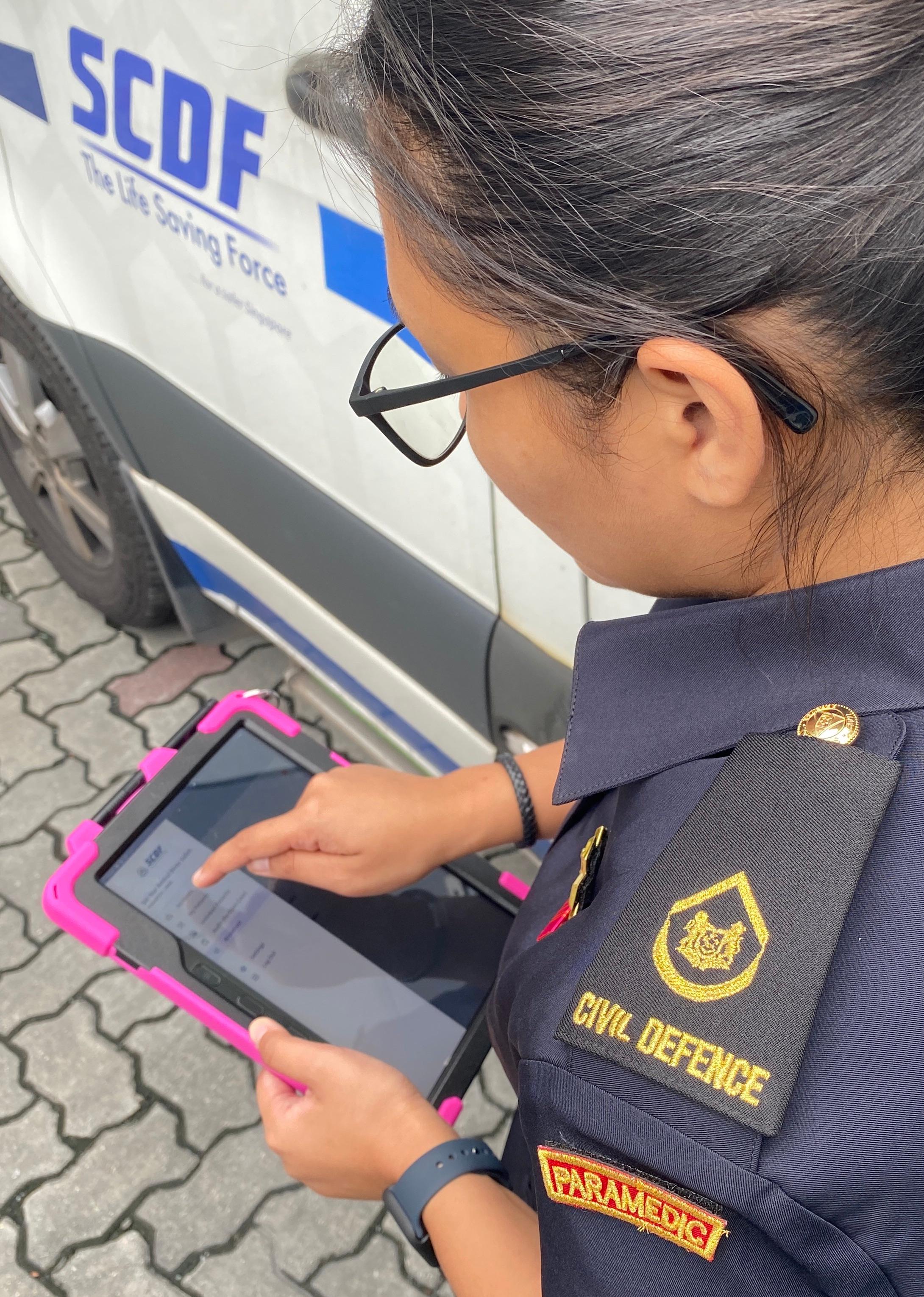
WO1 Norashikin using the OMNII tablet. PHOTO: SCDF / Thomas Lim
Rescue995: What were the key lessons that you have learned from this exercise and how will you apply them in the future?
CPT Hans Poh: First and foremost, the exercise reaffirmed my belief that teamwork is paramount. The team must have a shared objective in mind and be prepared to work towards it. Taking my team in the SCDF Marine Division as an example, each of us have distinct skill sets and experiences that can add value and contribute to achieving the desired outcome. I also realised that conducting briefings before and after each critical phase of the exercise proved highly beneficial. These briefings enabled us to assess our team's performance and pinpoint areas for improvement.
Adaptability is especially important for us, in the ever-changing maritime environment. For example, shifting tides could result in significant height differences between our vessel's freeboard and the berthing area. We need to be very observant and mindful of such situations, so that the mooring lines and the gangway can be adjusted for safe boarding or disembarkation from the vessels. We must have the ability to adapt and modify plans and strategies when we encounter unanticipated developments.
WO1 Norashikin: I believe that Exercise Northstar, like other major exercises, serves to keep us vigilant. It requires us to stay sharp and be in peak operational readiness to respond to the most challenging scenarios. The exercise has also given me a deeper understanding of the different roles played by the various agencies in real-life emergencies. I believe that such large-scale exercises also help to give the public confidence that Singapore can overcome major threats and remain resilient.
